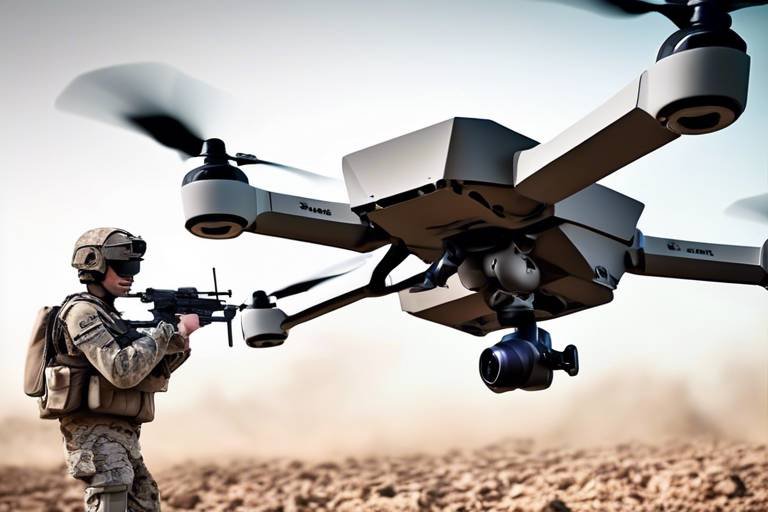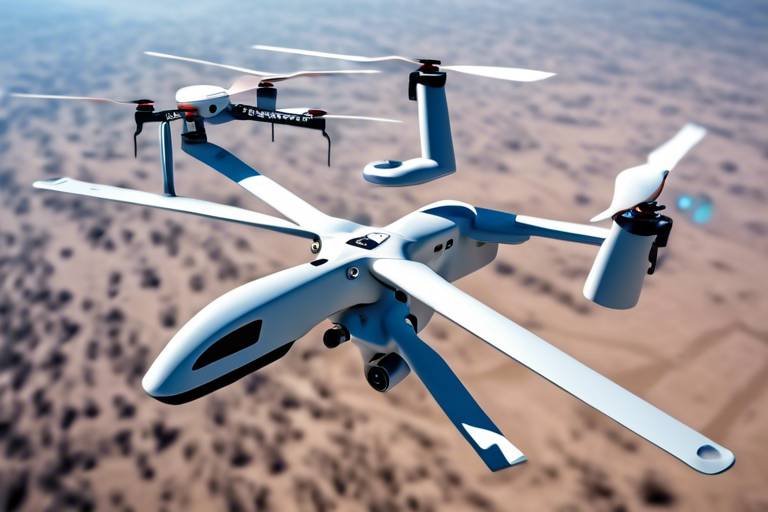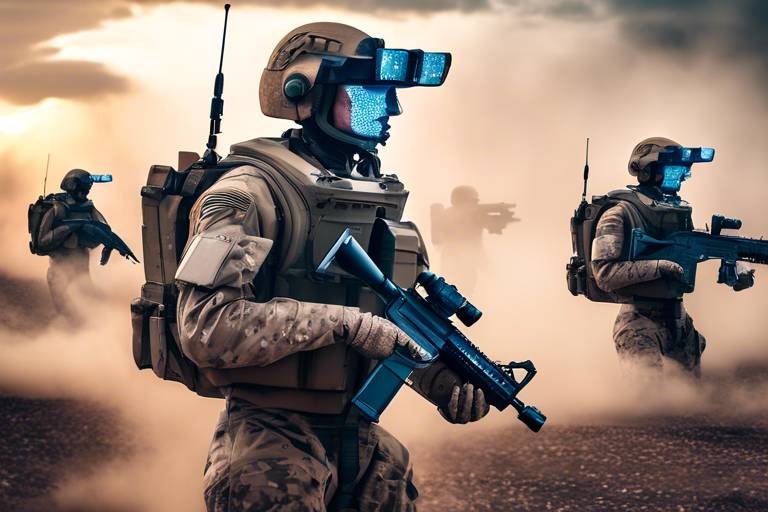How Cybersecurity is Evolving for Defense Forces
The digital battlefield is becoming as crucial as traditional warfare, and defense forces around the globe are taking significant strides to adapt to this new reality. With the rise of cyber threats, it’s no longer enough to rely solely on conventional military strategies. Instead, defense forces are increasingly focused on cybersecurity as a core component of national security. This evolution is not just a response to current threats but a proactive approach to safeguard against future challenges. The stakes are high; a breach in cybersecurity can compromise sensitive information, disrupt operations, and even endanger lives. So, how are these forces evolving to meet the demands of this digital age?
First and foremost, understanding the growing threat landscape is essential. Cyber adversaries are becoming more sophisticated, employing advanced tactics that require defense forces to stay one step ahead. This means constantly analyzing potential threats and adapting strategies to mitigate risks. The integration of advanced technologies is a game-changer in this realm, with innovations like artificial intelligence (AI) and machine learning revolutionizing how defense forces protect their networks. These technologies enable rapid threat detection and response, enhancing resilience against cyberattacks.
Moreover, training personnel is a critical facet of this evolution. Regular cybersecurity training ensures that defense personnel are equipped with the knowledge to recognize and respond to potential threats effectively. It’s not just about having the right technology; it’s also about fostering a culture of security awareness. In this way, every member of the defense force becomes a vital line of defense against cyber threats.
Collaboration with the private sector is another key strategy. By partnering with cybersecurity firms, defense forces can leverage external expertise and resources. This collaboration enhances capabilities through information sharing initiatives, which facilitate real-time communication about emerging threats and vulnerabilities. Joint cyber exercises also play a crucial role, allowing defense forces and private entities to simulate attack scenarios and improve their response coordination.
As we look to the future, it’s clear that establishing robust regulatory frameworks is essential for guiding cybersecurity practices within defense forces. Compliance with established standards is critical to maintaining operational integrity. Defense forces must develop and implement policies that ensure cybersecurity measures are integrated into all aspects of their operations. This proactive approach not only safeguards sensitive information but also strengthens the overall security posture of national defense.
Finally, the future trends in cybersecurity, including quantum computing and the Internet of Things (IoT), present both opportunities and challenges. Quantum computing could revolutionize encryption methods, but it also poses risks by potentially breaking existing security protocols. Similarly, the proliferation of IoT devices introduces new vulnerabilities that defense forces must address. Protecting networks from unauthorized access and data breaches is paramount as these technologies become more integrated into defense operations.
- What are the primary cyber threats facing defense forces today? Defense forces face a variety of cyber threats, including ransomware attacks, data breaches, and state-sponsored hacking efforts.
- How is AI used in cybersecurity for defense? AI is utilized for automating threat detection and response, analyzing vast amounts of data to identify anomalies faster than traditional methods.
- Why is personnel training important in cybersecurity? Regular training helps personnel recognize and respond to cyber threats effectively, fostering a culture of security awareness.
- What role does collaboration with the private sector play? Partnerships with private cybersecurity firms enhance capabilities through shared intelligence, resources, and best practices.
- How do regulatory frameworks impact defense cybersecurity? Regulatory frameworks guide cybersecurity practices, ensuring compliance and promoting a standardized approach to cyber defense.
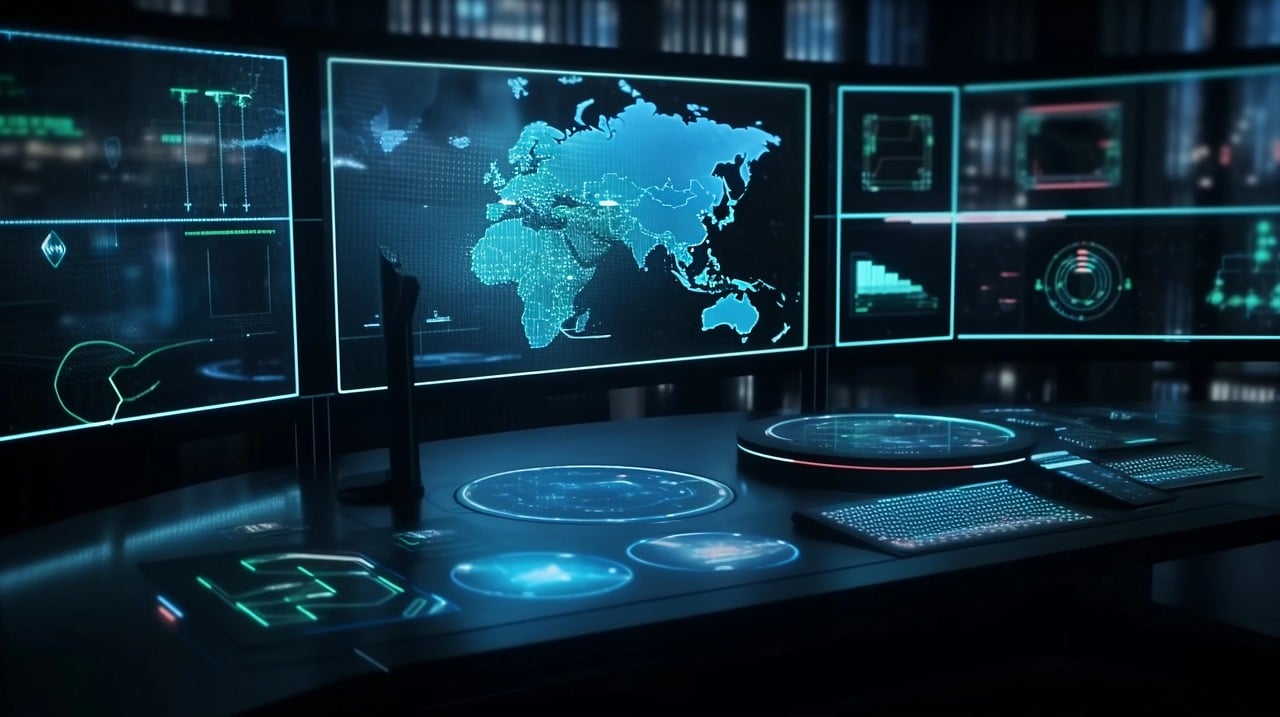
The Growing Threat Landscape
As we navigate through the 21st century, the cyber threat landscape is evolving at an unprecedented pace. Gone are the days when cyber threats were limited to simple malware or phishing attempts. Today, we face a complex web of sophisticated attacks that can cripple national security and disrupt critical infrastructure. Defense forces must remain vigilant, adapting to this dynamic environment to effectively counteract the ever-changing tactics employed by adversaries.
One of the most alarming aspects of this evolving threat landscape is the rise of state-sponsored cyber warfare. Countries are increasingly investing in cyber capabilities, not just for espionage but also for potential offensive operations. These state actors often employ advanced techniques that are difficult to detect and counter, making it essential for defense forces to stay ahead of the curve. The implications are profound; a single successful cyberattack could lead to significant disruptions in military operations, communications, and even civilian life.
In addition to state-sponsored threats, we are witnessing a surge in non-state actors engaging in cybercriminal activities. These groups often operate outside traditional military structures, making them harder to predict and counter. Whether it's hacktivists seeking to promote a political agenda or organized crime syndicates aiming for financial gain, the potential for chaos is immense. This is where understanding the motivations and tactics of these actors becomes crucial for defense forces.
Moreover, the increasing reliance on digital infrastructure across all sectors—from healthcare to finance—means that the potential impact of cyber threats extends far beyond the military realm. A successful cyberattack on a critical infrastructure component could lead to cascading effects that jeopardize national security. Therefore, defense forces must not only focus on their internal security but also collaborate with other sectors to create a robust defense strategy.
To illustrate the complexity of the current threat landscape, consider the following table that outlines the types of cyber threats and their potential impacts:
| Type of Cyber Threat | Description | Potential Impact |
|---|---|---|
| State-Sponsored Attacks | Cyber operations conducted by nation-states for espionage or sabotage. | Disruption of military operations and loss of sensitive information. |
| Cybercrime | Criminal activities conducted online, including ransomware and identity theft. | Financial loss and compromised personal data. |
| Hacktivism | Cyberattacks motivated by political or social agendas. | Public unrest and damage to reputations. |
| Insider Threats | Malicious actions taken by individuals within an organization. | Data breaches and loss of trust. |
In conclusion, the growing threat landscape demands that defense forces remain agile and proactive. Understanding the intricacies of these threats—from state-sponsored attacks to cybercrime—is essential for developing effective countermeasures. As technology continues to advance, so too must our strategies for defending against these evolving cyber threats.
- What are the main types of cyber threats faced by defense forces? Defense forces face a variety of threats, including state-sponsored attacks, cybercrime, hacktivism, and insider threats.
- How can defense forces prepare for emerging cyber threats? By investing in advanced technologies, conducting regular training, and fostering collaboration with the private sector, defense forces can enhance their preparedness against cyber threats.
- Why is information sharing important in cybersecurity? Information sharing allows for real-time communication about threats and vulnerabilities, helping all parties to stay informed and better protect their systems.

Advanced Technologies in Cyber Defense
The landscape of cybersecurity is undergoing a dramatic transformation, and at the forefront of this evolution are advanced technologies that are redefining how defense forces protect themselves against cyber threats. These technologies, particularly artificial intelligence (AI) and machine learning (ML), are not just buzzwords; they are becoming the backbone of modern cyber defense strategies. As cyber threats grow in complexity and frequency, the need for innovative solutions has never been more pressing.
One of the most significant advancements is the integration of AI into cybersecurity frameworks. AI systems can process and analyze vast amounts of data at lightning speed, identifying patterns and anomalies that would be impossible for human analysts to detect in real-time. Imagine having a digital watchdog that never sleeps, constantly monitoring for suspicious activities and alerting personnel before a potential breach can escalate. This capability is crucial for defense forces, where every second counts in averting a cyber disaster.
AI is revolutionizing the way defense forces handle cyber threats. By leveraging sophisticated algorithms, AI can automate threat detection and response, significantly reducing the time it takes to neutralize potential risks. For instance, AI-driven systems can sift through logs and network traffic, flagging unusual behavior that could indicate a cyberattack. This proactive approach not only enhances security but also allows human operators to focus on more complex issues rather than being bogged down by routine monitoring tasks.
At the heart of these AI systems are machine learning algorithms, which empower the technology to learn from new data continuously. These algorithms adapt and improve over time, becoming more adept at predicting and mitigating cyber threats. For example, if a new type of malware emerges, a machine learning model can analyze its behavior and adjust its detection parameters accordingly. This self-learning capability is akin to teaching a dog new tricks; the more exposure it has, the better it becomes at anticipating your commands.
Moreover, AI-driven incident response systems are becoming essential in managing cyber incidents. When a breach occurs, these systems can automate the response process, enabling defense forces to recover swiftly and minimize damage. By deploying pre-defined protocols, AI can isolate affected systems, block malicious traffic, and even initiate recovery procedures. This rapid response is vital in maintaining operational integrity and ensuring that critical infrastructure remains secure.
In addition to AI and machine learning, other advanced technologies are making waves in the realm of cybersecurity. For instance, blockchain technology is gaining traction for its ability to provide secure and tamper-proof data storage. This is particularly valuable for defense forces that handle sensitive information and need to ensure its integrity. Furthermore, the integration of cloud computing offers scalable solutions for data storage and processing, allowing for more flexible and adaptive cybersecurity strategies.
As we look to the future, it is clear that the evolution of cybersecurity technologies will continue to shape how defense forces operate. The challenge lies not only in adopting these advanced tools but also in ensuring that personnel are adequately trained to use them effectively. Regular training and awareness programs are essential for creating a culture of security within defense organizations, ensuring that every member understands their role in safeguarding national security.
- What role does AI play in cybersecurity for defense forces? AI automates threat detection and response, allowing for faster identification and mitigation of cyber threats.
- How do machine learning algorithms improve cybersecurity? They continuously learn from new data, enhancing their ability to predict and respond to emerging threats.
- What are the benefits of AI-driven incident response systems? These systems streamline the management of cyber incidents, enabling quicker recovery and minimizing damage.
- Why is training important for defense personnel in cybersecurity? Regular training fosters a culture of security and equips personnel with the skills needed to recognize and respond to threats effectively.
- What other technologies are impacting cybersecurity? Blockchain and cloud computing are also crucial in enhancing data security and providing scalable solutions for defense forces.

Artificial Intelligence in Cybersecurity
Artificial Intelligence (AI) is not just a buzzword; it’s a game changer in the realm of cybersecurity. Imagine having a tireless assistant that can sift through mountains of data, identify anomalies, and alert you to potential threats before they escalate. That’s exactly what AI brings to the table. By leveraging advanced algorithms and vast datasets, AI systems can detect patterns that would be nearly impossible for human analysts to uncover in real time. This capability is crucial, especially as cyber threats evolve and become more sophisticated.
One of the most significant advantages of AI in cybersecurity is its ability to automate threat detection and response. Traditional methods often rely on manual processes that can be slow and prone to human error. With AI, the response time can be dramatically reduced. For instance, when a suspicious activity is detected, AI systems can initiate predefined protocols automatically, ensuring a swift reaction that minimizes potential damage. This is akin to having a security alarm that not only alerts you but also calls the police for you!
Moreover, AI-driven systems excel in learning from experience. Through machine learning, these systems continuously improve their detection capabilities. They analyze previous incidents, learn what went wrong, and adapt their algorithms to prevent similar issues in the future. This self-improving nature of AI is a crucial asset in the ever-changing landscape of cyber threats. As new types of attacks emerge, AI can evolve to counter them effectively.
To illustrate this further, let's take a look at a simple table that highlights the key benefits of AI in cybersecurity:
| Benefit | Description |
|---|---|
| Speed | AI can analyze data and respond to threats in real time, significantly faster than human analysts. |
| Accuracy | Reduces the likelihood of false positives by using advanced algorithms to identify genuine threats. |
| Adaptability | Machine learning enables systems to evolve and improve over time, keeping pace with new threats. |
| Automation | Automates repetitive tasks, allowing human analysts to focus on more complex issues. |
In addition to these benefits, AI is also instrumental in enhancing incident response strategies. AI-driven incident response systems can analyze the nature of an attack and determine the best course of action. They can isolate affected systems, deploy patches, and even communicate with stakeholders, all without human intervention. This level of automation not only speeds up recovery times but also helps in reducing the overall impact of cyber incidents.
However, it’s important to note that while AI is a powerful tool, it’s not infallible. Cyber adversaries are also leveraging AI to develop more sophisticated attack strategies. This cat-and-mouse game means that cybersecurity professionals must remain vigilant and continuously update their defenses. The integration of AI into cybersecurity is not just about implementing new technologies; it’s about fostering a culture of innovation and adaptability within defense forces.
In conclusion, the role of AI in cybersecurity is transformative. It empowers defense forces to stay one step ahead of cyber threats, enhancing their ability to protect sensitive information and national security. By embracing AI technologies, defense forces can create a more resilient cybersecurity posture that adapts to the ever-evolving threat landscape.
- What is the role of AI in cybersecurity? AI helps detect and respond to cyber threats faster and more accurately than traditional methods.
- How does machine learning improve cybersecurity? Machine learning algorithms learn from past incidents to enhance threat detection and response capabilities.
- Can AI completely replace human analysts in cybersecurity? While AI can automate many tasks, human expertise is still essential for strategic decision-making and complex problem-solving.
- Are there risks associated with using AI in cybersecurity? Yes, cybercriminals may also use AI to develop sophisticated attacks, necessitating continuous adaptation of defense strategies.
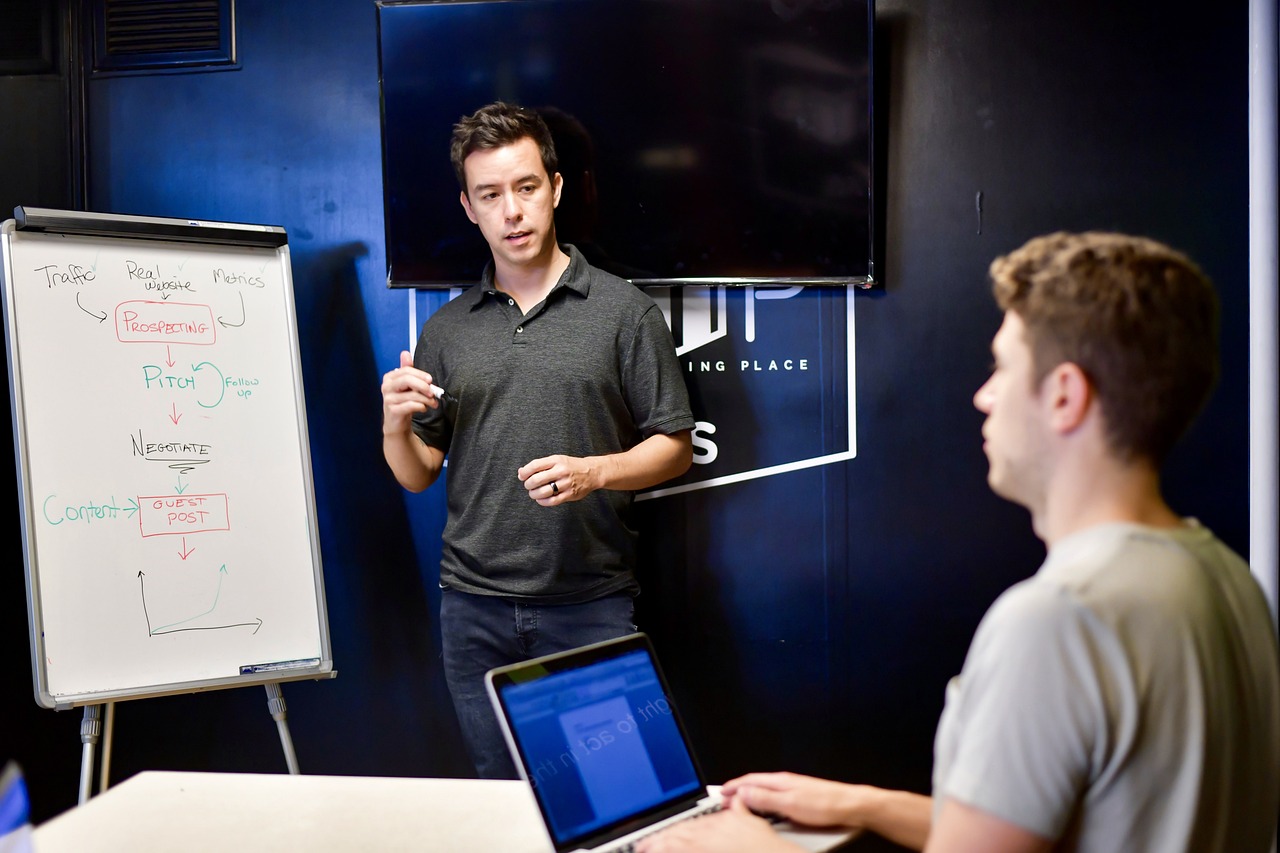
Machine Learning Algorithms
This article explores the transformation of cybersecurity within defense forces, highlighting emerging technologies, strategies, and challenges they face in safeguarding national security against cyber threats.
As cyber threats become increasingly sophisticated, defense forces must adapt to a dynamic environment. Understanding the evolving tactics of adversaries is crucial for developing effective countermeasures.
Emerging technologies such as artificial intelligence and machine learning are revolutionizing cyber defense strategies. These innovations enhance threat detection and response capabilities, making defense forces more resilient against cyberattacks.
AI is playing a pivotal role in automating threat detection and response. By analyzing vast amounts of data, AI systems can identify anomalies and potential threats faster than traditional methods.
Machine learning algorithms are essential for evolving cybersecurity protocols. They continuously learn from new data, improving their ability to predict and mitigate cyber threats. Think of machine learning as a highly intelligent student who never stops learning; the more data it consumes, the smarter it gets. This adaptability is particularly crucial in the realm of cybersecurity, where threats can morph and mutate at an alarming rate.
These algorithms employ various techniques to enhance their effectiveness. Here are a few key types:
- Supervised Learning: This involves training the algorithm on a labeled dataset, where the correct output is known. It helps in identifying patterns and making predictions based on past data.
- Unsupervised Learning: Here, the algorithm analyzes data without pre-existing labels, discovering hidden patterns or intrinsic structures within the data.
- Reinforcement Learning: This technique involves algorithms learning optimal actions through trial and error, receiving feedback from their actions to improve future decisions.
By leveraging these machine learning techniques, defense forces can enhance their cybersecurity measures significantly. For instance, supervised learning can be used to detect phishing attempts by analyzing historical data of previous attacks. Meanwhile, unsupervised learning can help identify unusual network traffic that could signal a breach, even if the specific threat has never been seen before. Reinforcement learning can optimize responses to attacks, learning from past incidents to improve future defenses.
Moreover, the integration of machine learning into cybersecurity not only helps in threat detection but also in automating responses. This means that when a potential threat is identified, the system can take immediate action, such as isolating affected systems or alerting personnel, thereby minimizing damage and downtime.
In summary, machine learning algorithms are a game-changer in the fight against cyber threats. Their ability to learn and adapt makes them invaluable tools for defense forces aiming to stay one step ahead of adversaries. As cyber threats continue to evolve, so too must the strategies employed to combat them, and machine learning stands at the forefront of this transformation.
Partnerships between defense forces and private cybersecurity firms enhance capabilities. Collaborative efforts lead to sharing intelligence, resources, and best practices, ultimately bolstering national security.
Information sharing initiatives facilitate real-time communication between the public and private sectors, ensuring that all parties are aware of the latest threats and vulnerabilities.
Conducting joint cyber exercises allows defense forces and private entities to test their response capabilities in simulated attack scenarios, improving preparedness and coordination.
Establishing robust regulatory frameworks is essential for guiding cybersecurity practices within defense forces. These policies help ensure compliance and promote a standardized approach to cyber defense.
Compliance with established cybersecurity standards is crucial for maintaining operational integrity. Defense forces must adhere to regulations that govern data protection and incident response.
Effective policy development and implementation ensure that cybersecurity measures are integrated into all aspects of defense operations, safeguarding sensitive information and infrastructure.
The future of cybersecurity in defense forces is shaped by emerging trends such as quantum computing and the Internet of Things. Staying ahead of these developments is vital for maintaining security.
Quantum computing presents both opportunities and challenges for cybersecurity. While it can enhance encryption methods, it also poses risks by potentially breaking existing security protocols.
The proliferation of Internet of Things devices introduces new vulnerabilities. Defense forces must address these security challenges to protect their networks from unauthorized access and data breaches.
- What is machine learning in cybersecurity? Machine learning in cybersecurity refers to the use of algorithms that learn from data to identify and respond to threats more effectively.
- How does AI improve cyber defense? AI improves cyber defense by automating threat detection and response, analyzing large volumes of data to identify anomalies faster than traditional methods.
- Why is collaboration important in cybersecurity? Collaboration between defense forces and private firms enhances capabilities by sharing intelligence, resources, and best practices, ultimately strengthening national security.

AI-Driven Incident Response
The landscape of cybersecurity is changing rapidly, and at the forefront of this evolution is . Imagine a world where defense forces can react to cyber threats as swiftly as a hawk swoops down on its prey. This is no longer just a dream; it’s becoming a reality thanks to the integration of artificial intelligence in incident response protocols. AI systems are designed to analyze vast amounts of data in real-time, allowing them to identify anomalies and potential threats faster than any human could. This capability is crucial in a world where cyber threats are not only increasing in number but also in complexity.
One of the most remarkable aspects of AI-driven incident response is its ability to automate many of the tedious tasks that once required significant human intervention. For instance, when a potential threat is detected, AI systems can automatically triage incidents based on their severity, prioritize them, and even initiate predefined response protocols. This means that defense personnel can focus on more strategic tasks while the AI handles the initial response. It’s akin to having a highly skilled assistant who never sleeps, tirelessly working to keep the network secure.
Moreover, AI-driven systems can learn from past incidents. By employing machine learning algorithms, these systems continuously improve their ability to predict and mitigate future threats. Each time an incident occurs, the AI analyzes the data, learns from the response, and adjusts its algorithms accordingly. This creates a feedback loop that enhances the overall resilience of the defense forces against cyberattacks. In essence, the more the system is used, the smarter it becomes, making it a powerful ally in the ongoing battle against cyber threats.
To illustrate the impact of AI on incident response, consider the following table that outlines some key benefits:
| Benefit | Description |
|---|---|
| Speed | AI can analyze and respond to threats in real-time, significantly reducing the time to mitigate incidents. |
| Efficiency | Automating routine tasks allows human operators to focus on complex decision-making and strategy. |
| Learning | Machine learning algorithms improve over time, enhancing the system's ability to predict threats. |
| Consistency | AI-driven responses are consistent and free from human error, ensuring reliable incident management. |
In conclusion, AI-driven incident response is not just a technological advancement; it’s a game-changer for defense forces. By automating processes, learning from past experiences, and providing rapid responses, AI equips defense personnel with the tools they need to stay one step ahead of cyber adversaries. As we move forward, the integration of AI in cybersecurity will undoubtedly play a pivotal role in safeguarding national security.
- What is AI-driven incident response? - It refers to the use of artificial intelligence to automate and enhance the process of responding to cybersecurity incidents.
- How does AI improve incident response times? - AI can analyze threats and initiate responses in real-time, significantly reducing the time it takes to mitigate incidents.
- Can AI learn from past incidents? - Yes, AI systems use machine learning algorithms to continuously learn and improve their threat detection and response capabilities.
- What are the benefits of using AI in cybersecurity? - Benefits include increased speed, efficiency, consistency, and the ability to learn and adapt over time.

Cybersecurity Training for Personnel
In today's digital battlefield, where threats lurk around every corner, cybersecurity training for defense personnel has become more than just a checkbox on a compliance list. It’s a vital component of national security. Imagine a soldier equipped with the latest weaponry but lacking the knowledge to recognize a cyber threat; it’s like sending a knight into battle without armor. Regular training sessions not only empower personnel with the skills to identify and counteract cyber threats but also foster a culture of vigilance and security within the organization.
Training programs are designed to be comprehensive, covering a wide array of topics that range from basic cybersecurity principles to advanced threat detection techniques. For instance, personnel learn about the latest phishing tactics that adversaries may employ, enabling them to spot suspicious emails or messages that could compromise sensitive information. Moreover, hands-on exercises simulate real-world cyber incidents, allowing personnel to practice their response strategies in a controlled environment. This practical experience is invaluable, as it builds confidence and prepares them for actual cyber emergencies.
Furthermore, the training does not stop at initial sessions. It is an ongoing process that adapts to the ever-evolving cyber landscape. Regular updates and refresher courses ensure that personnel are aware of the latest threats and best practices. Cybersecurity is not a one-time lesson; it is a continuous journey. By implementing a tiered training approach, defense forces can cater to various levels of expertise, ensuring that all personnel, from new recruits to seasoned veterans, receive the appropriate training tailored to their roles.
To illustrate the effectiveness of these training programs, consider the following table that highlights key components of a robust cybersecurity training curriculum:
| Training Component | Description |
|---|---|
| Phishing Awareness | Educating personnel on recognizing and reporting phishing attempts. |
| Incident Response | Simulated exercises to practice responding to cyber incidents. |
| Data Protection | Training on best practices for safeguarding sensitive information. |
| Social Engineering | Understanding tactics used by adversaries to manipulate personnel. |
Ultimately, investing in cybersecurity training is not just about compliance; it’s about building a resilient defense force capable of adapting to new threats. With the right training, personnel become the first line of defense, equipped with the knowledge and skills to thwart cyberattacks before they escalate. In this digital age, where information is power, ensuring that defense forces are well-trained in cybersecurity is crucial for safeguarding national security.
- Why is cybersecurity training important for defense personnel?
Cybersecurity training is essential to equip personnel with the knowledge and skills to identify and respond to cyber threats, thereby protecting sensitive information and national security. - How often should cybersecurity training be conducted?
Regular training should be conducted, with refresher courses and updates as new threats emerge, ensuring personnel stay current with best practices. - What topics are covered in cybersecurity training?
Topics typically include phishing awareness, incident response, data protection, and social engineering tactics.
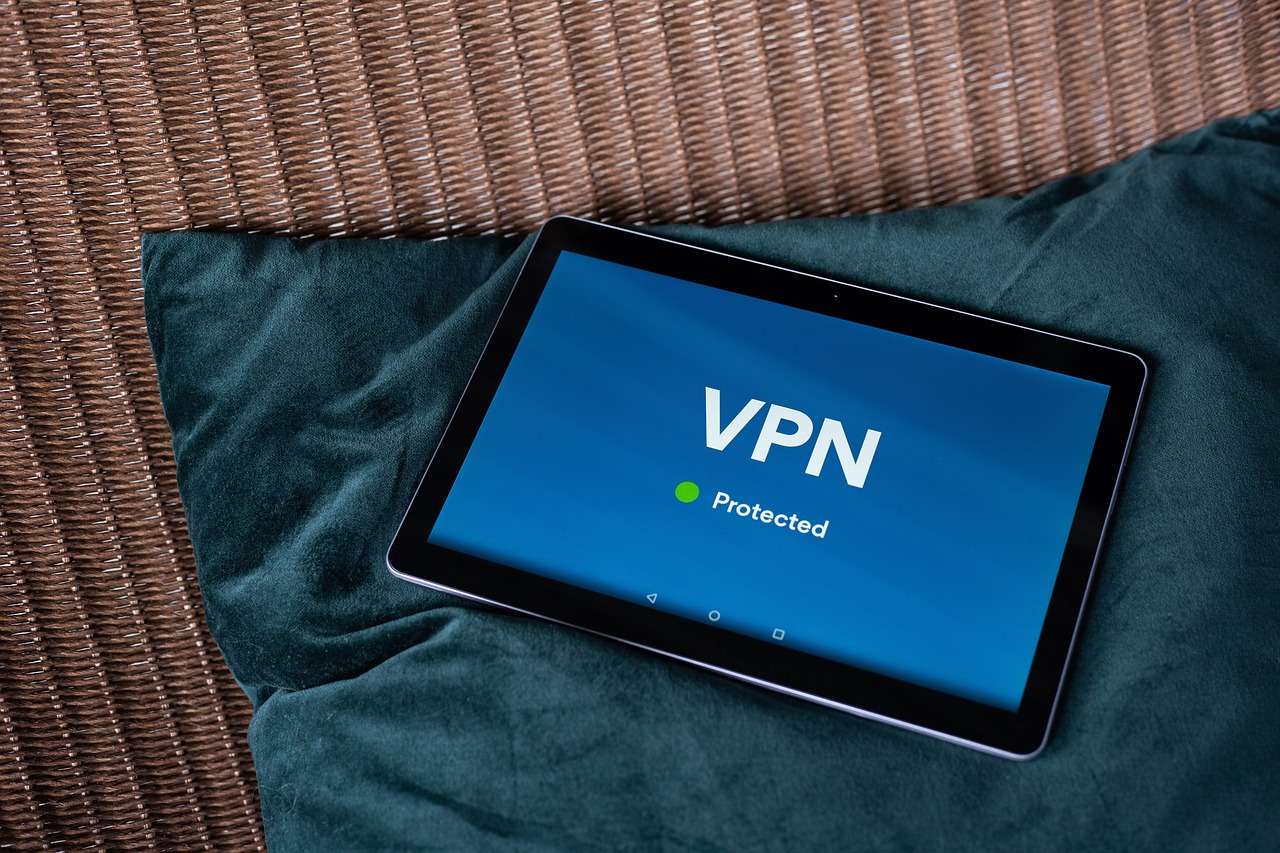
Collaboration with Private Sector
In today's interconnected world, the line between public and private cybersecurity efforts is becoming increasingly blurred. Defense forces are realizing that to effectively combat cyber threats, they must forge strong partnerships with private sector cybersecurity firms. This collaboration is not just beneficial; it's essential. By pooling resources and sharing expertise, both sectors can enhance their capabilities to address the ever-evolving threat landscape.
One of the key aspects of this collaboration is the sharing of intelligence. Private companies often have access to cutting-edge technologies and threat intelligence that can significantly bolster defense operations. For instance, when a private firm detects a new vulnerability in a widely used software, they can promptly inform defense forces, allowing them to take preventive measures before the threat escalates. This real-time communication is crucial in a field where seconds can mean the difference between thwarting an attack and suffering a breach.
Moreover, joint initiatives like cyber exercises are becoming common practice. These exercises simulate cyber-attack scenarios, allowing both defense forces and private entities to test their response strategies in a controlled environment. Such collaborations not only improve preparedness but also foster a spirit of teamwork and understanding between the two sectors. By working together, they can identify gaps in their defenses and develop more effective strategies to mitigate risks.
However, collaboration is not without its challenges. Issues such as data privacy, trust, and differing operational cultures can hinder effective partnerships. Defense forces must ensure that any shared information is handled securely and complies with regulatory standards. Building trust between public and private sectors is paramount; both parties must feel confident that their information and strategies are safeguarded. Overcoming these hurdles requires open communication and a commitment to mutual goals.
In summary, the collaboration between defense forces and the private sector represents a powerful alliance in the fight against cyber threats. By leveraging each other's strengths, they can create a more secure environment for national defense. As cyber threats continue to evolve, this partnership will become even more critical in safeguarding sensitive information and maintaining operational integrity.
- Why is collaboration between defense forces and the private sector important?
Collaboration enhances capabilities, facilitates intelligence sharing, and improves preparedness against cyber threats. - What are joint cyber exercises?
These are simulated attack scenarios where defense forces and private entities test their response capabilities, improving coordination and readiness. - What challenges do public-private partnerships face?
Challenges include data privacy concerns, trust issues, and differing operational cultures that can hinder effective collaboration. - How can trust be built between defense forces and private companies?
Open communication, transparency, and a commitment to shared goals are essential for building trust in these partnerships.
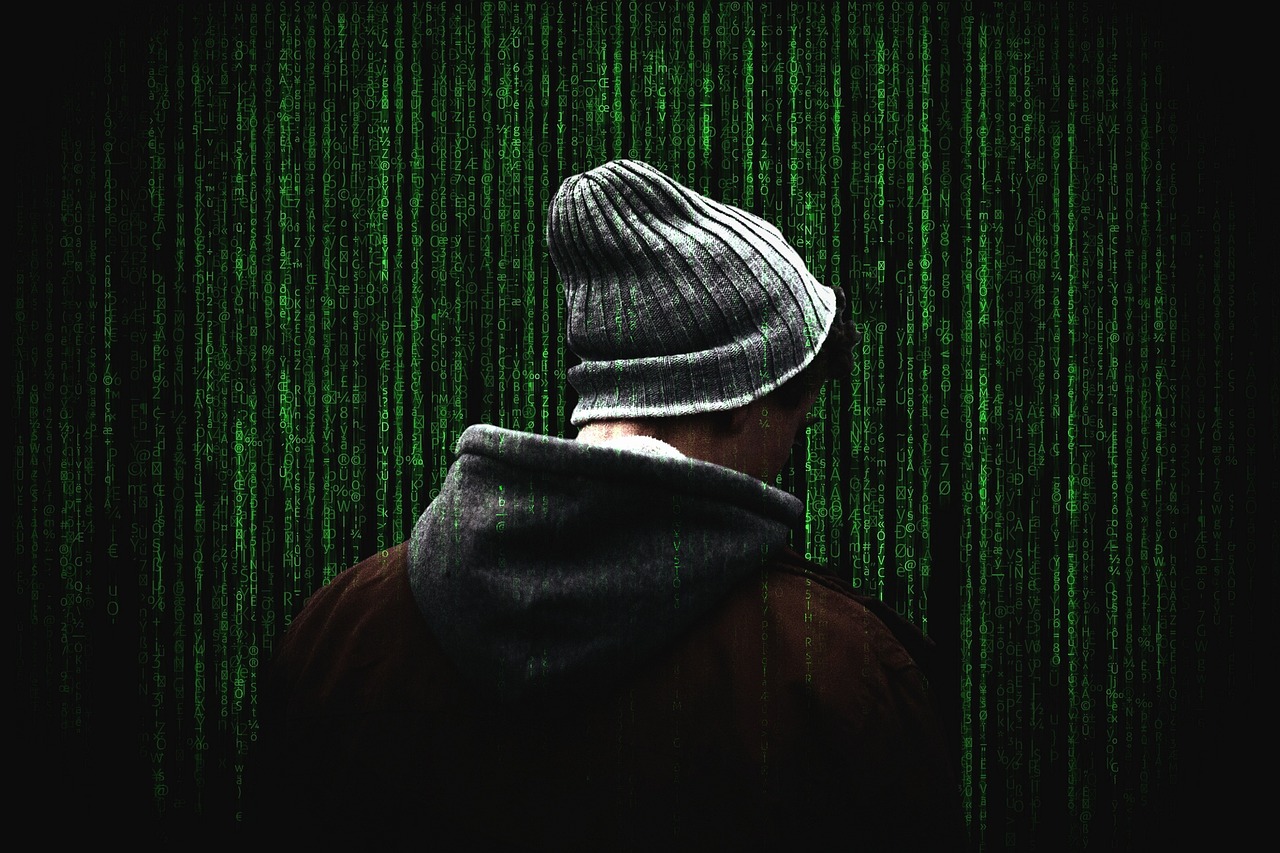
Information Sharing Initiatives
This article explores the transformation of cybersecurity within defense forces, highlighting emerging technologies, strategies, and challenges they face in safeguarding national security against cyber threats.
As cyber threats become increasingly sophisticated, defense forces must adapt to a dynamic environment. Understanding the evolving tactics of adversaries is crucial for developing effective countermeasures.
Emerging technologies such as artificial intelligence and machine learning are revolutionizing cyber defense strategies. These innovations enhance threat detection and response capabilities, making defense forces more resilient against cyberattacks.
AI is playing a pivotal role in automating threat detection and response. By analyzing vast amounts of data, AI systems can identify anomalies and potential threats faster than traditional methods.
Machine learning algorithms are essential for evolving cybersecurity protocols. They continuously learn from new data, improving their ability to predict and mitigate cyber threats.
AI-driven incident response systems streamline the process of managing cyber incidents, enabling faster recovery and minimizing damage during attacks.
Training defense personnel in cybersecurity awareness is vital. Regular training helps them recognize and respond to potential threats effectively, fostering a culture of security within the organization.
Partnerships between defense forces and private cybersecurity firms enhance capabilities. Collaborative efforts lead to sharing intelligence, resources, and best practices, ultimately bolstering national security.
Information sharing initiatives play a critical role in enhancing cybersecurity for defense forces. These initiatives foster a collaborative environment where both public and private sectors can exchange vital information regarding potential threats and vulnerabilities. By establishing secure channels for communication, defense forces can stay ahead of emerging cyber threats. This proactive approach allows for the rapid dissemination of intelligence, ensuring that all stakeholders are informed and prepared.
One of the key benefits of these initiatives is the ability to share real-time threat intelligence. For instance, when a new vulnerability is discovered in a widely used software, immediate alerts can be sent to all relevant parties. This not only helps in mitigating risks but also strengthens the overall security posture of the nation. Moreover, regular updates and briefings can be organized to keep everyone in the loop about the latest trends in cyber threats.
Additionally, information sharing initiatives often involve:
- Joint Task Forces: These groups consist of members from both defense and private sectors, working together to analyze threats and develop strategic responses.
- Workshops and Training Sessions: Regularly scheduled events that focus on educating participants about the latest cybersecurity practices and technologies.
- Threat Intelligence Platforms: Utilizing advanced platforms that aggregate data from various sources to provide actionable insights into potential threats.
By leveraging these initiatives, defense forces can create a robust network of information exchange that not only enhances their security capabilities but also fosters a culture of vigilance and preparedness across the board.
Establishing robust regulatory frameworks is essential for guiding cybersecurity practices within defense forces. These policies help ensure compliance and promote a standardized approach to cyber defense.
Compliance with established cybersecurity standards is crucial for maintaining operational integrity. Defense forces must adhere to regulations that govern data protection and incident response.
Effective policy development and implementation ensure that cybersecurity measures are integrated into all aspects of defense operations, safeguarding sensitive information and infrastructure.
The future of cybersecurity in defense forces is shaped by emerging trends such as quantum computing and the Internet of Things. Staying ahead of these developments is vital for maintaining security.
Quantum computing presents both opportunities and challenges for cybersecurity. While it can enhance encryption methods, it also poses risks by potentially breaking existing security protocols.
The proliferation of Internet of Things devices introduces new vulnerabilities. Defense forces must address these security challenges to protect their networks from unauthorized access and data breaches.
- What are information sharing initiatives? Information sharing initiatives are collaborative efforts between public and private sectors to exchange vital intelligence regarding cybersecurity threats and vulnerabilities.
- Why are these initiatives important? They enhance situational awareness, improve threat detection, and foster a proactive approach to cybersecurity.
- How do defense forces collaborate with private firms? Through joint task forces, workshops, and sharing of threat intelligence, defense forces and private firms work together to strengthen national security.
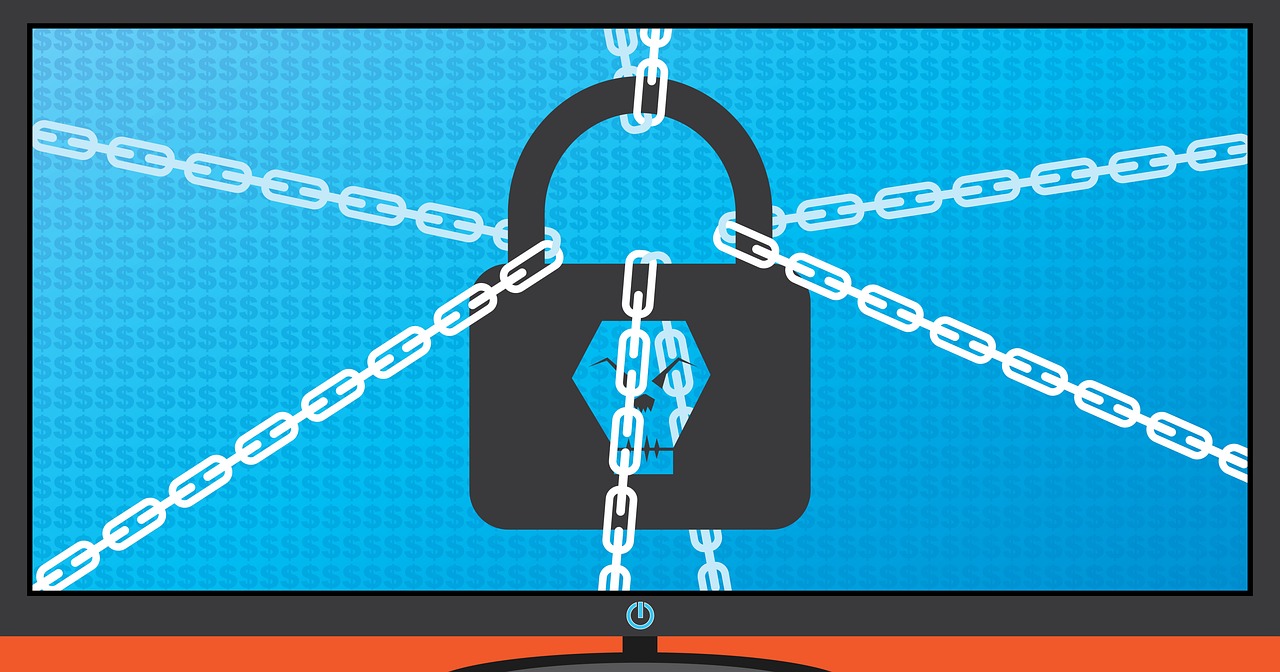
Joint Cyber Exercises
Joint cyber exercises are increasingly becoming a cornerstone of modern defense strategies, as they provide a unique platform for collaboration between military and private sector entities. These exercises simulate real-world cyber-attack scenarios, allowing participants to test their response capabilities in a controlled environment. Imagine a fire drill, but instead of flames, you’re battling invisible threats that could cripple critical infrastructure. The stakes are high, and the need for precision and coordination is paramount.
These exercises not only enhance the technical skills of the personnel involved but also foster a culture of teamwork and communication. When defense forces collaborate with private cybersecurity firms, they create a synergy that amplifies their collective capabilities. For instance, a joint exercise might involve a scenario where a simulated cyber-attack targets a military communication network. Both military personnel and private sector experts work together to identify vulnerabilities, respond to the attack, and develop strategies to mitigate similar threats in the future.
During these exercises, participants engage in various roles, from attackers to defenders, which helps them understand the mindset of adversaries. Here are some key benefits of conducting joint cyber exercises:
- Enhanced Preparedness: Regular exercises ensure that teams are well-prepared to respond to real cyber threats.
- Improved Communication: These exercises promote better communication between different entities, breaking down silos that can hinder effective response.
- Identification of Weaknesses: Simulations help in pinpointing vulnerabilities within systems and processes, allowing for timely upgrades and improvements.
- Best Practices Sharing: Participants can share insights and techniques, enriching the overall knowledge base of cybersecurity strategies.
Moreover, joint cyber exercises can be tailored to specific threats that are relevant to the current geopolitical landscape. For example, if there’s an uptick in ransomware attacks targeting critical infrastructure, an exercise can be designed around that scenario, ensuring that all involved parties are prepared to tackle such challenges head-on. These tailored exercises help in maintaining a proactive stance against evolving cyber threats.
In conclusion, joint cyber exercises serve as a vital mechanism for enhancing the cybersecurity posture of defense forces. By simulating real-world scenarios and fostering collaboration with private sector partners, these exercises not only prepare teams for potential attacks but also cultivate a culture of continuous improvement and adaptability. As cyber threats continue to evolve, the importance of these exercises cannot be overstated. They are not just drills; they are essential practices that keep our national security robust and resilient.
- What are joint cyber exercises? Joint cyber exercises are simulations that involve collaboration between military and private sector entities to test their response to cyber threats.
- Why are these exercises important? They help enhance preparedness, improve communication, identify weaknesses, and share best practices among participants.
- How often are joint cyber exercises conducted? The frequency can vary, but many organizations conduct these exercises regularly to stay ahead of emerging threats.
- Can private companies participate in these exercises? Yes, private cybersecurity firms often participate, bringing valuable expertise and resources to the table.
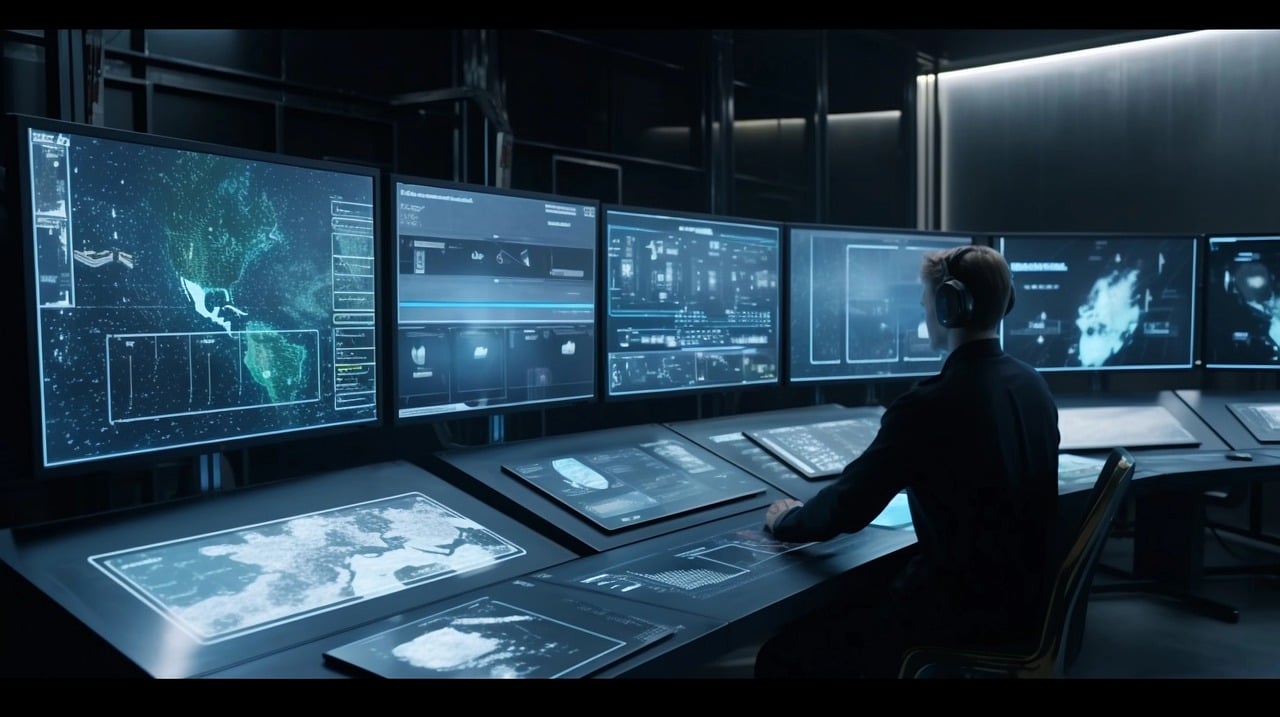
Regulatory Frameworks and Policies
Establishing robust regulatory frameworks is essential for guiding cybersecurity practices within defense forces. These frameworks serve as the backbone of a secure environment, ensuring that all personnel and systems adhere to standardized protocols that mitigate risks associated with cyber threats. Just like a well-structured building needs a solid foundation, defense forces require comprehensive policies to maintain operational integrity and resilience against cyberattacks. Without these frameworks, the risk of vulnerabilities increases, potentially compromising national security.
One of the primary roles of these regulatory frameworks is to promote compliance with established cybersecurity standards. Compliance is not merely a checkbox exercise; it is a commitment to safeguarding sensitive information and infrastructure. In the context of defense forces, adherence to regulations governing data protection and incident response is crucial. For instance, frameworks like the Federal Information Security Management Act (FISMA) and the General Data Protection Regulation (GDPR) outline specific requirements that defense organizations must follow. These regulations help to create a culture of accountability and vigilance within the organization.
Moreover, effective policy development and implementation ensure that cybersecurity measures are integrated into all aspects of defense operations. This integration is akin to weaving a safety net; it provides multiple layers of protection against potential breaches. Policies should cover a wide range of areas, including:
- Incident response protocols
- Data encryption standards
- Access control measures
- Regular audits and assessments
By establishing comprehensive policies that address these critical areas, defense forces can create a robust cybersecurity posture that not only protects their assets but also fosters trust among the public and allied nations. Furthermore, continuous evaluation and adaptation of these policies are necessary to keep pace with the ever-evolving threat landscape. Just as a river carves its path through a landscape, regulatory frameworks must be flexible enough to adapt to new challenges and technologies.
In conclusion, the importance of regulatory frameworks and policies in cybersecurity for defense forces cannot be overstated. They provide the necessary structure and guidance to navigate the complex world of cyber threats, ensuring that defense organizations remain resilient and prepared for any potential attack. As we move forward into an increasingly digital future, the commitment to strong regulatory practices will be essential in safeguarding national security.
- What are regulatory frameworks in cybersecurity? Regulatory frameworks are structured guidelines and policies that govern cybersecurity practices, ensuring compliance and promoting standardized approaches to protect sensitive information.
- Why is compliance important for defense forces? Compliance is crucial for maintaining operational integrity, safeguarding sensitive data, and ensuring that defense forces are prepared to respond effectively to cyber threats.
- How can defense forces ensure their policies are effective? Defense forces can ensure the effectiveness of their policies by regularly reviewing and updating them, conducting training for personnel, and performing audits to identify and address vulnerabilities.

Compliance Standards for Cybersecurity
In the ever-evolving landscape of cybersecurity, compliance standards serve as the backbone for ensuring that defense forces operate securely and effectively. These standards are not just bureaucratic red tape; they are essential frameworks designed to protect sensitive information and maintain operational integrity. When defense forces adhere to established compliance standards, they not only safeguard their own data but also contribute to the broader national security ecosystem.
Compliance standards typically encompass a variety of regulations and guidelines that dictate how organizations should handle data, respond to incidents, and maintain security protocols. Some of the most recognized frameworks include the National Institute of Standards and Technology (NIST) Cybersecurity Framework, the ISO/IEC 27001, and the Federal Risk and Authorization Management Program (FedRAMP). Each of these frameworks provides a structured approach to managing cybersecurity risks, ensuring that defense forces can effectively protect their assets against an array of threats.
Moreover, compliance with these standards is not a one-time effort; it requires ongoing commitment and adaptation. Defense forces must regularly assess their compliance status, conduct audits, and implement necessary changes to align with evolving regulations. This continuous improvement process is crucial, as cyber threats are constantly changing, and what was secure yesterday may not be secure tomorrow.
To illustrate the importance of compliance standards, consider the following table that outlines some key compliance frameworks and their primary focus areas:
| Compliance Framework | Focus Area | Key Benefits |
|---|---|---|
| NIST Cybersecurity Framework | Risk Management | Improved risk assessment and management strategies |
| ISO/IEC 27001 | Information Security Management | Establishes a systematic approach to managing sensitive information |
| FedRAMP | Cloud Security | Standardizes security assessments for cloud services used by federal agencies |
Implementing compliance standards also fosters a culture of security awareness among personnel. When defense forces prioritize compliance, they instill a sense of responsibility and vigilance in their teams. This cultural shift is vital, as human error remains one of the leading causes of security breaches. Regular training and awareness programs can further enhance compliance efforts, ensuring that all personnel understand their roles in maintaining cybersecurity.
In conclusion, compliance standards are not merely guidelines; they are essential components of a robust cybersecurity strategy for defense forces. By adhering to these standards, organizations can enhance their security posture, protect sensitive information, and ultimately contribute to national security. As cyber threats continue to evolve, the importance of compliance will only increase, making it imperative for defense forces to stay proactive in their efforts.
- What are compliance standards in cybersecurity? Compliance standards are regulations and guidelines that organizations must follow to manage and protect sensitive information effectively.
- Why are compliance standards important for defense forces? They help ensure operational integrity, protect sensitive data, and contribute to national security by establishing a structured approach to managing cybersecurity risks.
- How often should defense forces assess their compliance status? Regular assessments are crucial, and organizations should conduct audits and reviews at least annually or whenever significant changes occur.
- What role does personnel training play in compliance? Training fosters a culture of security, ensuring that all personnel understand their responsibilities and can effectively respond to potential threats.

Policy Development and Implementation
In the ever-evolving landscape of cybersecurity, serve as the backbone of effective defense strategies for military forces. Just like a well-structured blueprint is essential for constructing a sturdy building, robust policies are critical for establishing a resilient cyber defense framework. These policies not only guide daily operations but also ensure that the defense forces are prepared to tackle emerging threats with agility and precision.
To develop effective cybersecurity policies, defense organizations must first identify their unique operational needs and the specific cyber threats they face. This involves a comprehensive risk assessment that evaluates potential vulnerabilities within their systems and networks. Once the risks are identified, policies can be tailored to address these vulnerabilities, thereby creating a customized approach to cybersecurity that aligns with the organization's strategic goals.
Implementation of these policies is equally important. It requires a coordinated effort across all levels of the organization. This means that everyone, from high-ranking officers to entry-level personnel, must understand their roles and responsibilities in maintaining cybersecurity. Regular training sessions and workshops can help in fostering a culture of security awareness. For instance, a cybersecurity training program might include:
- Understanding the latest cyber threats
- Recognizing phishing attempts
- Learning about secure password practices
- Incident reporting procedures
Moreover, the policies must be dynamic, adapting to the rapidly changing cyber landscape. This requires continual review and updates to ensure that they remain relevant and effective. Defense forces should establish a policy review committee that regularly assesses the effectiveness of existing policies and recommends necessary changes. This committee can also be responsible for integrating feedback from personnel who encounter these policies in their daily operations, ensuring that the policies are practical and user-friendly.
Another critical aspect of policy implementation is ensuring compliance with established regulations and standards. Defense forces must adhere to both national and international cybersecurity regulations, which can vary significantly. A failure to comply not only jeopardizes the security of sensitive information but can also lead to legal ramifications. Therefore, creating a compliance checklist that outlines the necessary standards can be beneficial. This checklist should include:
| Compliance Standard | Description |
|---|---|
| ISO/IEC 27001 | International standard for information security management. |
| NIST Cybersecurity Framework | A policy framework of computer security guidance for how private sector organizations can assess and improve their ability to prevent, detect, and respond to cyber attacks. |
| GDPR | Regulation on data protection and privacy in the European Union. |
In conclusion, the development and implementation of cybersecurity policies are not merely administrative tasks; they are vital components of a comprehensive defense strategy. By fostering a culture of security, ensuring compliance with regulations, and continuously adapting to new threats, defense forces can significantly enhance their cybersecurity posture. As we move into an increasingly digital future, the importance of these policies will only grow, making them essential for safeguarding national security.
- Why is policy development important in cybersecurity? Policy development is crucial as it provides a structured approach to managing cybersecurity risks, ensuring that all personnel understand their roles and responsibilities in protecting sensitive information.
- How often should cybersecurity policies be reviewed? Cybersecurity policies should be reviewed regularly, ideally on an annual basis, or whenever there is a significant change in technology or threat landscape.
- What are some common compliance standards for defense forces? Common compliance standards include ISO/IEC 27001, NIST Cybersecurity Framework, and GDPR, among others.

Future Trends in Cybersecurity
The landscape of cybersecurity is constantly shifting, and as we look to the future, several emerging trends are set to redefine how defense forces protect their digital assets. One of the most significant trends is the rise of quantum computing. This groundbreaking technology has the potential to revolutionize encryption methods, making them exponentially more secure. However, it also brings with it a set of challenges, particularly the risk of existing security protocols being rendered obsolete. Imagine a world where a quantum computer could crack traditional encryption in seconds—this is the reality that defense forces must prepare for.
Additionally, the proliferation of the Internet of Things (IoT) is creating a new frontier in cybersecurity challenges. As more devices become interconnected, the attack surface for cybercriminals expands dramatically. Each IoT device, whether it's a smart sensor on a military vehicle or a connected surveillance camera, can serve as a potential entry point for unauthorized access. Defense forces must adopt a proactive approach to IoT security, ensuring that robust measures are in place to prevent breaches and protect sensitive data.
To navigate these challenges, defense forces are increasingly investing in advanced cybersecurity frameworks that incorporate artificial intelligence and machine learning. These technologies enable real-time threat detection and response, allowing for a more agile defense posture. For instance, AI can analyze patterns and behaviors across networks, identifying anomalies that may indicate a cyber threat. This capability not only enhances the speed of detection but also improves the accuracy of responses, minimizing the impact of potential attacks.
Moreover, the integration of blockchain technology is gaining traction as a means to enhance security protocols. By creating immutable records of transactions and communications, blockchain can provide a transparent and tamper-proof method of safeguarding sensitive information. This is particularly crucial for defense forces, where the integrity of data is paramount. The adoption of blockchain could lead to more secure supply chains and better management of classified information, ultimately fortifying national security.
As we look ahead, it's clear that defense forces must remain vigilant and adaptable in the face of these evolving cyber threats. Investing in continuous training for personnel, fostering collaboration with private sector experts, and staying abreast of technological advancements will be essential strategies for maintaining cybersecurity resilience. The future may be uncertain, but by embracing innovation and preparing for the unexpected, defense forces can better safeguard their operations and national security.
- What is quantum computing, and how does it impact cybersecurity?
Quantum computing utilizes the principles of quantum mechanics to process information at unprecedented speeds. While it can enhance encryption methods, it poses risks by potentially breaking traditional security protocols. - How does the Internet of Things (IoT) affect cybersecurity?
The IoT introduces new vulnerabilities as more devices connect to networks. Each device can be a potential entry point for cybercriminals, necessitating robust security measures to protect against unauthorized access. - What role does AI play in future cybersecurity measures?
AI enhances threat detection and response capabilities by analyzing large datasets to identify anomalies and potential threats, allowing for quicker and more accurate responses to cyber incidents. - Why is blockchain technology important for defense cybersecurity?
Blockchain provides a secure, tamper-proof method for managing sensitive information and transactions, enhancing data integrity and security within defense operations.

Quantum Computing Implications
Quantum computing is not just a buzzword; it's a revolutionary leap in technology that could redefine the landscape of cybersecurity. Imagine a world where computers can solve complex problems in seconds that would take traditional computers thousands of years. This potential comes with both exciting opportunities and daunting challenges. On one hand, quantum computing can significantly enhance encryption methods, making data transmission more secure than ever before. However, on the flip side, it poses serious risks by potentially breaking existing security protocols.
The implications of quantum computing for defense forces are profound. As these forces increasingly rely on digital systems for communication and operations, the emergence of quantum technology introduces a dual-edged sword. For instance, while quantum key distribution (QKD) can provide unbreakable encryption, the advent of quantum algorithms, such as Shor's algorithm, could render current encryption methods obsolete. This means that sensitive data previously thought secure could be exposed, leading to catastrophic breaches of national security.
To navigate these complexities, defense forces must stay ahead of the curve. This involves investing in quantum-resistant algorithms and technologies that can withstand the power of quantum computers. In fact, many organizations are already exploring post-quantum cryptography, which aims to create encryption methods that are secure against both classical and quantum attacks. The race is on to develop these new standards before quantum computers become widely accessible.
Moreover, collaboration between defense forces and tech innovators is crucial. By pooling resources and expertise, they can accelerate the development of quantum-safe solutions. Initiatives such as joint research projects and public-private partnerships can foster an environment where innovative ideas flourish, ultimately strengthening national security against emerging quantum threats.
In conclusion, the implications of quantum computing for cybersecurity are vast and multifaceted. As defense forces prepare for a future where quantum technology plays a pivotal role, they must adopt a proactive approach to cybersecurity. This includes not only enhancing current systems but also preparing for the inevitable challenges that quantum computing will bring. The future may be uncertain, but one thing is clear: adapting to these changes is essential for safeguarding our digital frontiers.
- What is quantum computing? Quantum computing is an advanced form of computing that uses quantum bits (qubits) to process information in ways that traditional computers cannot.
- How does quantum computing affect cybersecurity? While quantum computing can enhance encryption methods, it also has the potential to break existing security protocols, posing significant risks to sensitive data.
- What is post-quantum cryptography? Post-quantum cryptography refers to cryptographic algorithms that are believed to be secure against the capabilities of quantum computers.
- Why is collaboration important in addressing quantum threats? Collaboration allows for the sharing of knowledge and resources, accelerating the development of effective cybersecurity measures against quantum threats.

IoT Security Challenges
The proliferation of Internet of Things (IoT) devices has revolutionized the way defense forces operate, but it has also introduced a myriad of security challenges that cannot be ignored. With the increasing number of connected devices, ranging from surveillance cameras to smart weapons systems, the attack surface for potential cyber threats has expanded significantly. This means that every new device added to a network can potentially become a gateway for unauthorized access, making it crucial for military organizations to implement robust security measures.
One of the primary challenges is the lack of standardization across IoT devices. Unlike traditional IT systems, which often adhere to strict security protocols, many IoT devices are manufactured with minimal security features. This inconsistency can lead to vulnerabilities that cyber adversaries can exploit. For instance, an unsecured device might allow hackers to infiltrate a network, gaining access to sensitive military data and operations. To combat this, defense forces must advocate for and adopt standardized security protocols that all IoT devices must meet before being integrated into military networks.
Another significant challenge is the management of device lifecycle. IoT devices often have a long operational lifespan, but their security updates may not be maintained for as long. This can lead to situations where devices become obsolete and vulnerable over time. Military organizations must implement a lifecycle management strategy that includes regular updates, patches, and, when necessary, the decommissioning of outdated devices. Furthermore, ensuring that all devices are configured securely from the outset is essential. This includes changing default passwords, disabling unnecessary features, and regularly auditing devices for security compliance.
Moreover, the integration of IoT devices with existing systems poses another layer of complexity. Many defense forces rely on legacy systems that may not be compatible with modern IoT devices. This can create vulnerabilities if these systems are not adequately secured. To address this, organizations need to ensure that all components of their infrastructure can communicate securely, perhaps through the implementation of firewalls and intrusion detection systems that monitor traffic between devices.
In addition to these challenges, the potential for data breaches is also a pressing concern. IoT devices often collect vast amounts of data, which can include sensitive information about military operations or personnel. If this data is not adequately protected, it can be intercepted by malicious actors. Defense forces must therefore prioritize data encryption and secure data transmission protocols to safeguard this information from prying eyes.
To summarize, while the advantages of IoT technology are undeniable, the associated security challenges must be addressed head-on. By establishing standardized protocols, managing device lifecycles effectively, ensuring compatibility with existing systems, and protecting sensitive data, defense forces can mitigate the risks posed by IoT devices. The journey towards a secure IoT environment is ongoing, and it requires continuous adaptation and vigilance to stay ahead of evolving cyber threats.
- What are IoT devices in the context of defense forces?
IoT devices refer to interconnected devices that communicate and share data, such as surveillance cameras, drones, and smart sensors used in military applications. - Why is standardization important for IoT security?
Standardization helps ensure that all devices meet specific security requirements, reducing vulnerabilities that can be exploited by cyber adversaries. - How can defense forces manage the lifecycle of IoT devices?
By implementing regular updates, conducting audits, and decommissioning outdated devices, defense forces can maintain a secure IoT environment. - What measures can be taken to protect data collected by IoT devices?
Data encryption and secure transmission protocols are essential for safeguarding sensitive information from unauthorized access.
Frequently Asked Questions
- What are the main cyber threats facing defense forces today?
Defense forces are increasingly facing sophisticated cyber threats such as ransomware, phishing attacks, and advanced persistent threats (APTs). These threats are evolving rapidly, making it essential for defense forces to stay ahead by understanding the tactics employed by adversaries.
- How is artificial intelligence changing cybersecurity in defense?
Artificial intelligence (AI) is revolutionizing cybersecurity by automating threat detection and response. AI systems can analyze vast amounts of data to identify anomalies and potential threats much faster than traditional methods, enhancing the overall security posture of defense forces.
- Why is cybersecurity training important for defense personnel?
Regular cybersecurity training is crucial for defense personnel as it equips them with the skills to recognize and respond to potential threats. By fostering a culture of security, personnel can act swiftly and effectively during cyber incidents, minimizing potential damage.
- What role does collaboration with the private sector play in cybersecurity?
Collaboration between defense forces and private cybersecurity firms enhances capabilities through shared intelligence, resources, and best practices. This partnership leads to improved preparedness and a more robust national security framework.
- How do regulatory frameworks impact cybersecurity practices?
Robust regulatory frameworks guide cybersecurity practices within defense forces, ensuring compliance with standards that govern data protection and incident response. These policies promote a standardized approach to cyber defense, safeguarding sensitive information and infrastructure.
- What future trends should defense forces be aware of in cybersecurity?
Defense forces should keep an eye on emerging trends such as quantum computing and the Internet of Things (IoT). While quantum computing can enhance encryption, it also poses risks to existing security protocols. Similarly, the proliferation of IoT devices introduces new vulnerabilities that must be addressed to protect networks from unauthorized access.










